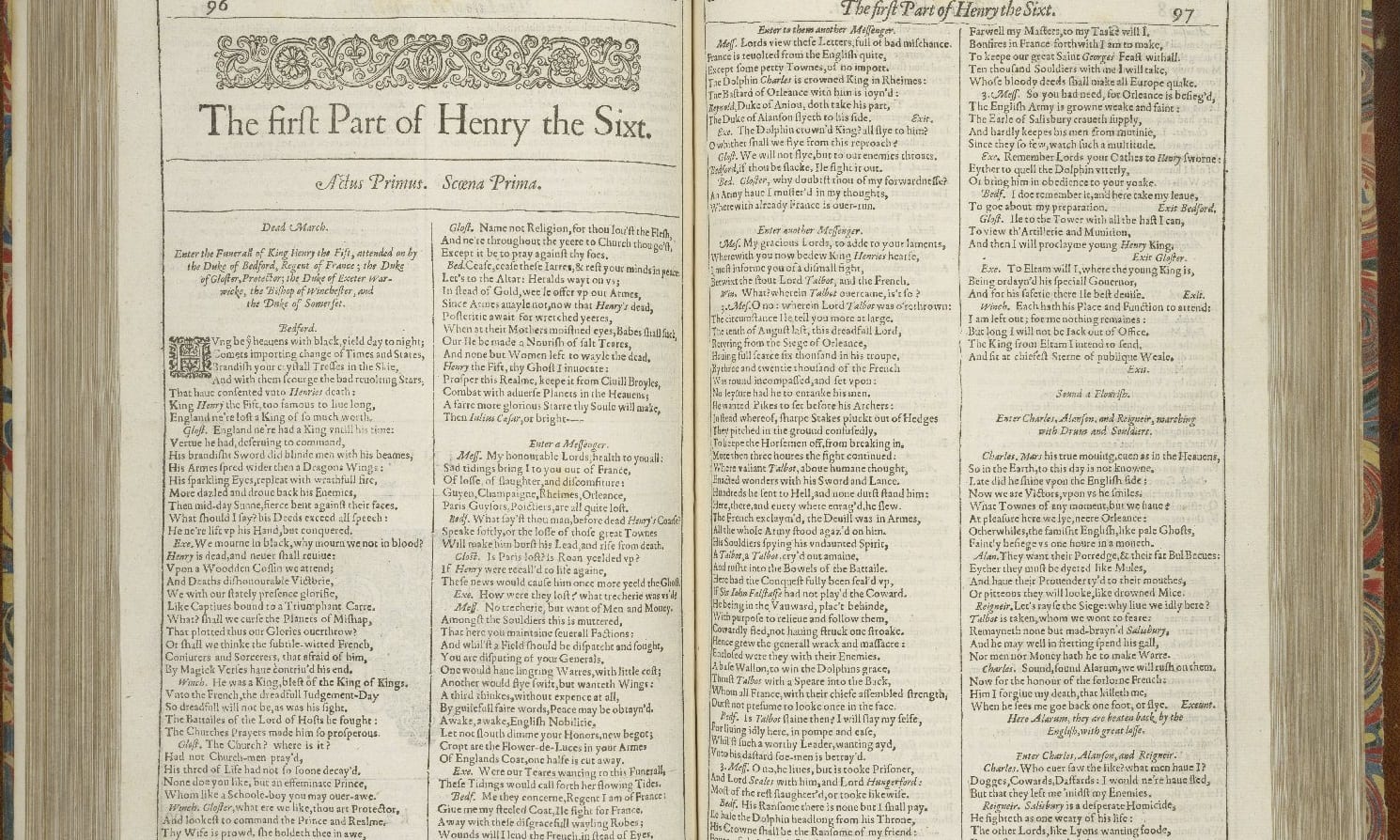Shakespeare is best known for his tragedies and comedies. Out of his less appreciated historical works, Henry VI – a series of three, independently-working plays – stands out. Along with Richard III, these three plays cover the majority of the Wars of the Roses, and are often referred to as the Minor Tetralogy.
They follow the conflicted reign of Henry VI, culminating in the Battle of Towton in which he finally surrenders his crown. The 29 March marks 560 years since the battle, so it feels timely to revisit Henry VI by visiting each play on consecutive days much like how the plays might have been performed.
While the plays are widely known as Shakespeare works, there is some debate around who wrote them. Oxford University Press recently decided to credit Christopher Marlowe as co-author. Although who wrote what is undoubtedly of interest, it does not change the plays themselves or the impact they have when performed. After all, performance is always a collaborative act, so what does it matter if it was a joint effort?
Henry VI, Part I is an odd play, in that the initial focus is not on the scheming nobles who surround King Henry, but is on those nobles fighting in France, and so covers the rise and death of Joan of Arc. A modern audience might feel that this is more important than grown men running around, throwing stones and picking flowers to show allegiance.
By shifting between scenes of court bickering and the violent open warfare in France, Shakespeare neatly reminds the audience of what is to come. Yet that violence is almost frustratingly denied to the audience. Other than small skirmishes between the nobles’ retainers, the conflict in London remains merely spoken about and plotted.
This sense of violence and disorder is sometimes used to criticise the play. According to neoclassical ideas of drama, battle scenes should always be reported rather than shown directly. This is certainly not the case here, quite purposefully it seems. By violating the expectations of the audience – who also would have been rather shocked at the reality of what they were seeing, as Henry VI, Part I is most likely the first major play to depict recent events of English history – Shakespeare encapsulates the disturbing instability of civil war.
More importantly, it is a stretch to imagine that the average Elizabethan theatregoer would care that much about how this play ignores the neoclassical ideals. It is easier to imagine a riotous Christmas performance at Gray’s Inn, thrillingly shocked by the violent scenes and drunkenly ambling home, pausing to marvel at some rose bushes near Temple Church thinking that they might just be the ones picked to such disastrous effect a few hundred years before.
A version of the play that brings out the childish nature of much of the action, is Jane Howell’s 1983 BBC TV adaptation, in which the rather petulant and puerile nature of the plotting is reflected. Howell worked with the designer Oliver Bayldon to create a set like a children’s playground, and the scene in which Gloucester and Winchester argue outside the Tower of London is brilliantly undercut by having them ride hobbyhorses.
Henry VI, Part I is a tension-filled play well worth watching, and I would be surprised if anyone can watch it and not instinctively want more in the form of the other two parts.
Words by Ed Bedford.
Support The Indiependent
We’re trying to raise £200 a month to help cover our operational costs. This includes our ‘Writer of the Month’ awards, where we recognise the amazing work produced by our contributor team. If you’ve enjoyed reading our site, we’d really appreciate it if you could donate to The Indiependent. Whether you can give £1 or £10, you’d be making a huge difference to our small team.
Image: Folger Shakespeare Library Digital Image Collection
